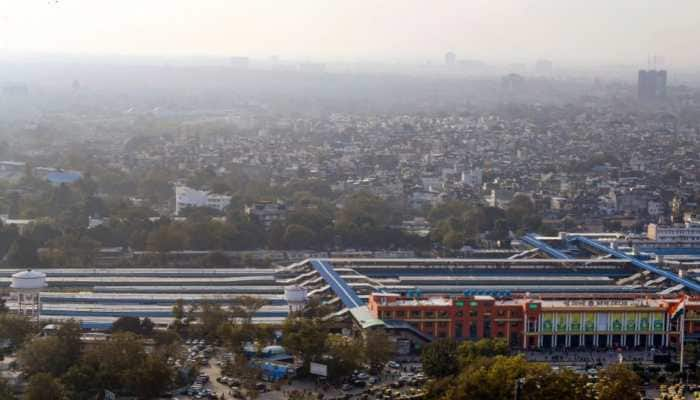NASA study finds evidence of wrecked planets being devoured by 'winking' star
Located about 550 light-years away in the constellation Pisces, the RZ Piscium has erratic dimming episodes which can last as long as two days.
Trending Photos
) Image courtesy: NASA/YouTube
Image courtesy: NASA/YouTube New Delhi: Understanding the massive space world and the bodies within it is certainly not an easy task, but scientists across the globe are putting in every fiber of their being into extracting the countless secrets it harbours. Secrets that will offer a glimpse into its existence and consequent evolution.
Studying one such celestial body – the star RZ Piscium – NASA has found evidence suggesting that its strange, unpredictable dimming episodes may be caused by vast orbiting clouds of gas and dust, the remains of one or more destroyed planets.
"Our observations show there are massive blobs of dust and gas that occasionally block the star's light and are probably spiraling into it," said Kristina Punzi, a doctoral student at the Rochester Institute of Technology (RIT) in New York and lead author of a paper describing the findings. "Although there could be other explanations, we suggest this material may have been produced by the break-up of massive orbiting bodies near the star."
Check out the video released by NASA below:
(Video courtesy: NASA Goddard)
Located about 550 light-years away in the constellation Pisces, the RZ Piscium has erratic dimming episodes which can last as long as two days.
During those dimming episodes, the star becomes as much as 10 times fainter and produces far more energy at infrared wavelengths than emitted by stars like our Sun, which indicates the star is surrounded by a disk of warm dust.
In fact, about 8 percent of its total luminosity is in the infrared, a level matched by only a few of the thousands of nearby stars studied over the past 40 years. This implies enormous quantities of dust.
According to NASA, these and other observations led some astronomers to conclude that RZ Piscium is a young Sun-like star surrounded by a dense asteroid belt, where frequent collisions grind the rocks to dust.
However, an alternative view suggests the star is instead somewhat older than our Sun and just beginning its transition into the red giant stage. A dusty disk from the star's youth would have dispersed after a few million years, so astronomers needed another source of dust to account for the star's infrared glow. Because the aging star is growing larger, it would doom any planets in close orbits, and their destruction could provide the necessary dust.
The team, therefore, concluded that RZ Piscium is a mix of two things – a young star with a debris disk as well as a planet-smashing stellar senior.
The team investigated the star using the European Space Agency's (ESA) XMM-Newton satellite, the Shane 3-meter telescope at Lick Observatory in California and the 10-meter Keck I telescope at W. M. Keck Observatory in Hawaii.
A paper reporting the findings was published Thursday, December 21, in The Astronomical Journal.
Stay informed on all the latest news, real-time breaking news updates, and follow all the important headlines in india news and world News on Zee News.
Live Tv







)
)
)
)
)
)
)
)
)
)
